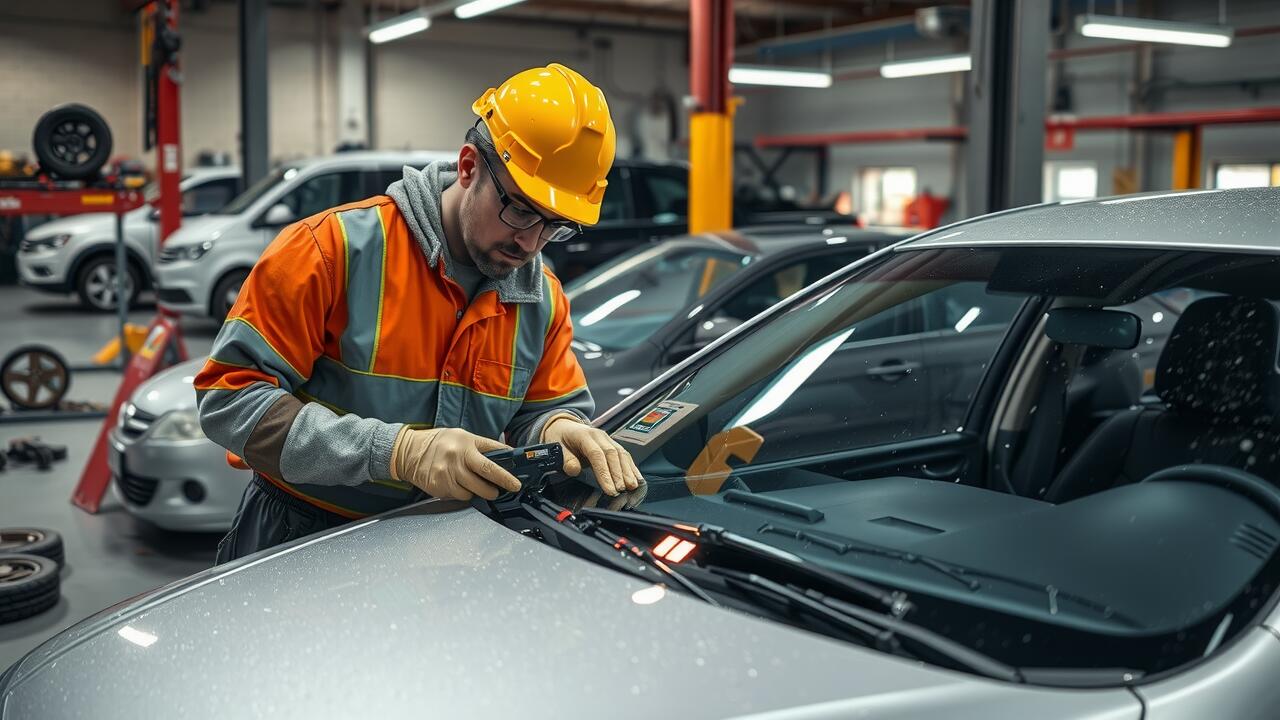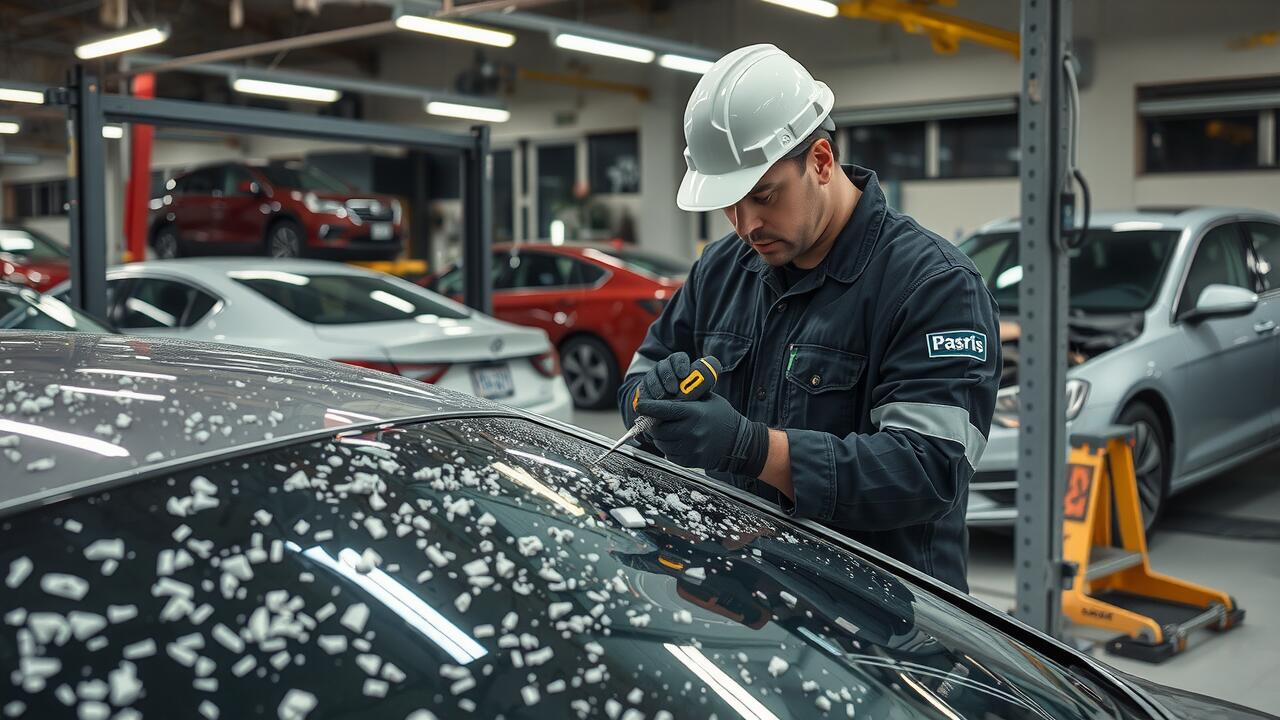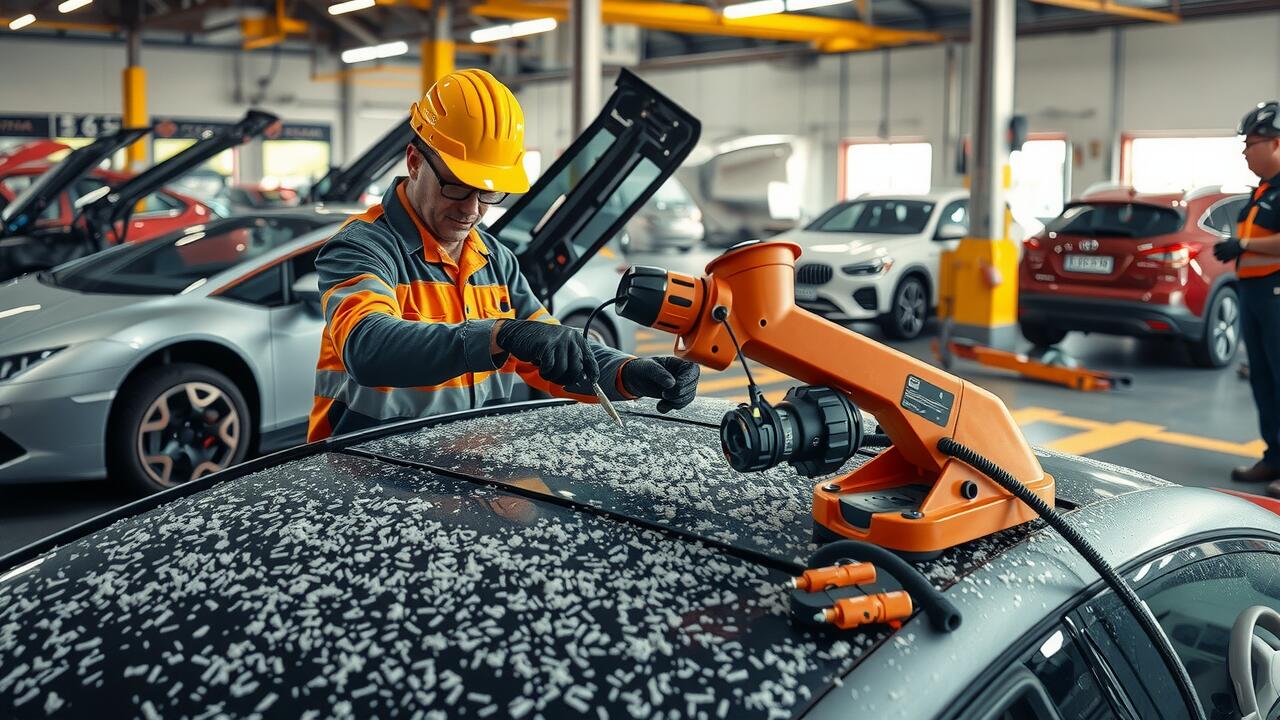
Factors Influencing Hail Damage Repair
The extent of hail damage varies based on several factors, significantly affecting the repair process. The size of the hailstones plays a crucial role; larger stones typically create more severe dents, necessitating more extensive repairs. Additionally, the speed at which hail falls can influence the impact. A vehicle's location during a storm, whether it is parked under a shelter or exposed, will also dictate the level of damage sustained.
The material of the vehicle's surface is another vital factor in hail damage repair. Cars made from softer metals or plastic panels often sustain more noticeable dents compared to those with harder surfaces. This variation in materials affects not only the degree of visible damage but also the repair methods employed. Understanding these factors can help vehicle owners prepare for potential repairs and safeguard their investments better.
Vehicle Material and Dent Severity
The material used in a vehicle's construction plays a significant role in determining the severity of hail damage. Steel, which is commonly used in older models, tends to be more resistant to dents than softer materials like aluminum or plastic. As hailstones strike, the impact can cause varying levels of deformation depending on the fabric's resilience. Vehicles with aluminum bodies can show more pronounced dents, making the process of Hail Damage Repair more challenging and potentially costly.
In addition to the vehicle's material, the size and density of the hailstones also affect dent severity. Larger, heavier stones can create more significant damage, especially on softer surfaces. Understanding how these factors interact can help car owners gauge the extent of potential damage after a hailstorm. Early assessment is crucial in deciding the best approach for Hail Damage Repair to restore the vehicle's appearance and value.
Protective Measures Against Hail Damage
Protecting your vehicle from hail damage requires proactive measures. One effective strategy is to invest in a high-quality car cover specifically designed for hail protection. These covers can cushion your vehicle against hail impact, reducing the likelihood of dents and scratches. Additionally, parking your car in a garage or covered area whenever possible provides an extra layer of defense against severe weather.
Despite taking precautions, hail damage can still occur. In such cases, understanding the signs of damage is crucial for timely repairs. Hail Damage Repair may include assessing the size and depth of the dents, as well as the paint condition. Early detection can significantly improve the repair process and potentially decrease long-term costs.
Tips to Safeguard Your Vehicle
Taking proactive steps can significantly reduce the risk of hail damage. Consider investing in a high-quality car cover that offers robust protection during severe weather conditions. Additionally, parking in a garage or under a carport shields the vehicle from direct exposure to hail. Keeping your vehicle indoors whenever possible ensures it remains safe from nature's unexpected surprises.
In areas prone to hail storms, creating a designated safe space is beneficial. Always stay updated with weather forecasts and take action when severe weather is predicted. Familiarizing yourself with the signs of hail damage can also aid in early detection. If you do notice any dents, seeking professional Hail Damage Repair promptly can help restore your vehicle's appearance and prevent further issues.
Spotting Hail Damage Early
Hail damage often leaves visible signs on vehicles that may be easy to overlook at first glance. Small dents or dings appearing on the vehicle's surface are the most common indicators. These imperfections can be accompanied by paint cracks and chips, which may indicate more severe damage beneath. Regularly inspecting your vehicle, particularly after a hailstorm, can help in identifying these issues before they escalate, making Hail Damage Repair more manageable and cost-effective.
Another sign to look for is the presence of small round marks or indentations on the surface of the car. These marks may seem minor, but they can compromise the integrity of the paint and metal underneath. Immediate attention to these signs not only prevents a more significant problem down the line but also facilitates timely Hail Damage Repair. Keeping an eye on your vehicle and seeking professional assessment right after a storm ensures that any potential damage is addressed promptly.
Signs Your Car Has Been Affected by Hail
After a storm, inspecting your vehicle for signs of hail damage is essential. Look for small dents on the car’s surface, especially on the hood, roof, and trunk. These dents may vary in size but typically have a round shape where hailstones made contact. In some cases, the paint might be chipped or scratched, indicating more severe damage.
Another telltale sign includes the presence of cracks in the windows or windshield. If you notice any divots or pockmarks, it’s crucial to address these issues as they can lead to further problems. Early identification of hail damage can streamline the Hail Damage Repair process, potentially saving you time and expenses down the line.
FAQS
Can the sun help pop out hail dents?
While the sun can sometimes make minor dents less noticeable due to heat expansion, it typically does not pop out hail dents on its own. Professional repair methods are usually required for best results.
What factors influence the severity of hail damage on a vehicle?
Factors that influence hail damage severity include the size of the hail stones, the speed of the wind, the angle of impact, and the material of the vehicle. Harder materials like metal may show more damage than softer materials.
What protective measures can I take to prevent hail damage to my car?
To protect your vehicle from hail damage, consider using a car cover, parking in a garage or under a carport, or investing in a hail protection blanket specifically designed for vehicles.
How can I spot hail damage on my vehicle early?
Look for signs such as small dents or dings on the body of your car, especially on the hood and roof. Paint may also appear cracked or chipped in areas affected by hail.
Is it possible to repair hail damage myself?
While some minor dents can be repaired using DIY methods like heat and cold treatments or using a hairdryer and compressed air, most hail damage requires professional repair for the best outcome.

